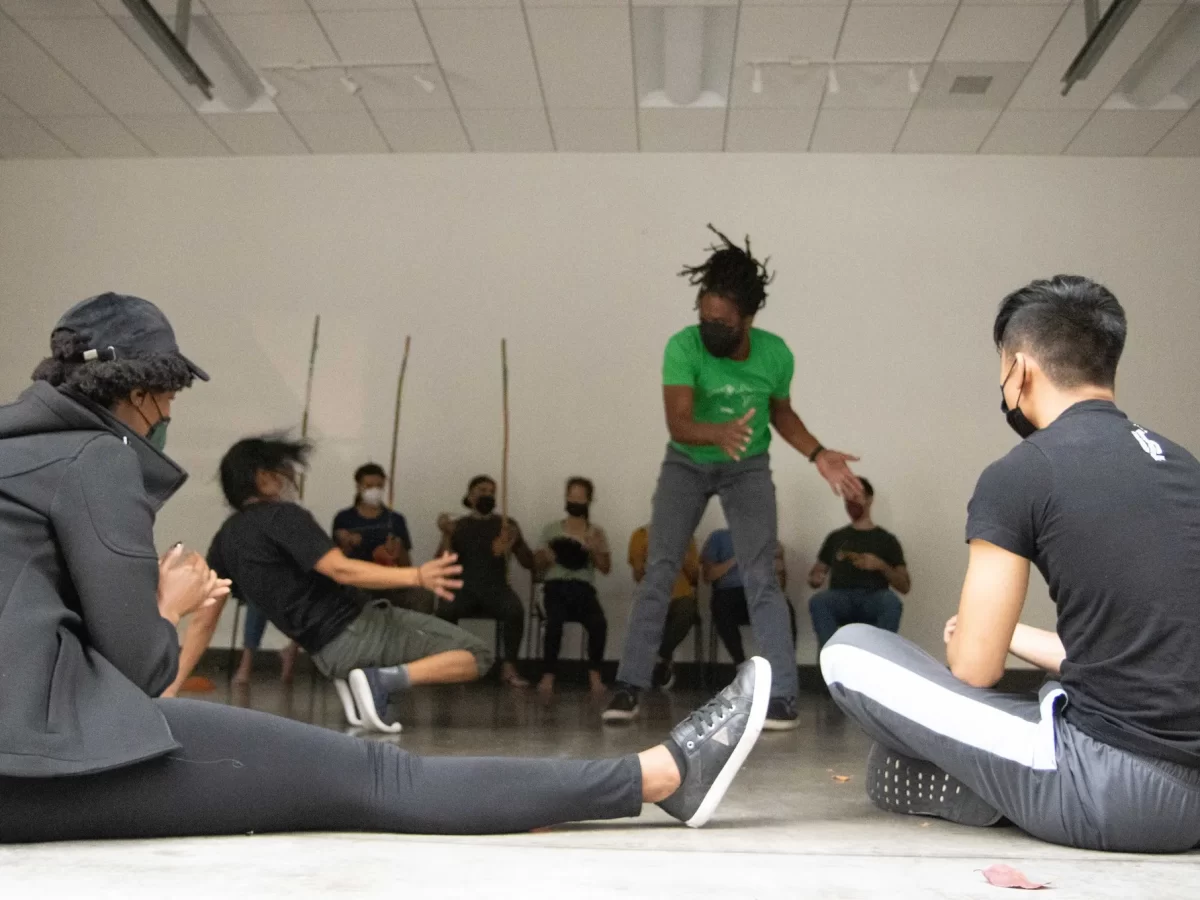BRANDO NNADI WAS researching where to move from Nashville two years ago when he visited the capoeira community in Seattle. “I decided to go ahead and take a leap and come out here,” he says. “I didn’t even know anybody, but after spending some time with people, I felt I already had a community here.” Now, he coaches kids in this dancelike combination of game and martial art that originated in Brazil hundreds of years ago.
I met Nnadi and other capoeiristas when I joined the Seattle Capoeira Center for a roda, a traditional event named (in Portuguese) for the circle in which it takes place. The Capoeira Center is one of a few capoeira organizations in Seattle and many around the world.
Those who know only a bit about it, like me, think of capoeira as a sinuous series of movements, like handstands or graceful sweeps of the arms and legs. But it’s about much more than the moves.
Musicians in the roda sing and play Brazilian instruments — keeping the beat on the single string of a berimbau or a pandeiro drum. Their rhythms set the tone and cadence for the movement.
People take turns entering the circle to play opponents, often communicating via gestures or eye movements so that, to an observer, the transitions appear seamless and intuitive.
“There is an unspoken agreement about how to have a challenging and beautiful game together,” Mikhaila Gonzales explains.
The hypnotic mix of music, voice and movement absorbs even a casual observer; to those inside the circle, it’s both energizing and calming. “For the most part, I just try to keep an open mind and let my body flow,” Omari Jarmon tells me. “It can put you in a trance, a little bit.”
The songs are in Portuguese and often refer to capoeira’s history. Participants emphasize the importance of honoring its roots: Enslaved people in Brazil developed it to practice martial arts disguised as dance. In other words, it was a form of resistance. It can be that today, too — a way to “resist barriers in a way that’s healing,” says Emily Chao.
Classes teach movement sequences; students combine them in practice. “We do all that with the Brazilian culture, the African culture, incorporated,” says Seattle Capoeira Center’s mestre (meaning “master” or “teacher”), Syed Taqi.
Taqi had a rough childhood and was headed for gang membership. Capoeira gave him the camaraderie he was seeking, but without the violence. “It exposed me to a whole new world,” Taqi says. “It exposed me to everything people are capable of doing.”
The practice teaches how to diffuse conflict through what he calls “physical problem-solving.” And its roots and philosophy make it welcoming for marginalized people. “Capoeira can still be used to uplift oppressed people because it’s an inclusive community and an inclusive art,” he says. Now, he reaches out to young people who might need the same thing he did.
Perhaps because it involves so many elements, capoeira teaches lessons that apply outside the roda. “There’s always something new to learn. It could be about music, Portuguese, history or challenging how my body moves,” Gonzales says. Or she might learn something about herself. “Capoeira is a mirror, and the things that I’m working on in capoeira are often the same as what I’m working on in my life.”
